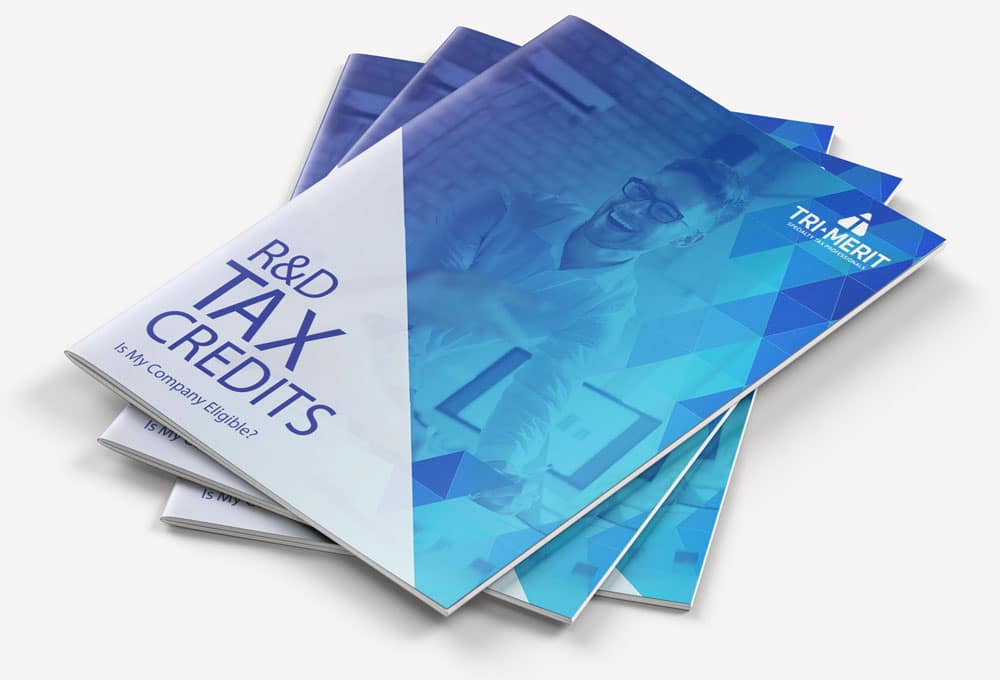Investing capital into new ideas can be overwhelming, especially for small businesses, but it’s often necessary to improve the products and services offered or create new and innovative solutions. In order to create and improve technologies and products, it is best to seek various funding sources for your efforts.
We are going to focus on two specific funding opportunities today: Small Business Innovation Research (SBIR) grants and The Research and Development (R&D) Tax Credit.
The Difference Between SBIR Grants and R&D Tax Credits
Grants and tax credits are similar in that you won’t lose equity or have to pay them back, but grants look at your future efforts and tax credits focus on past efforts.
For SBIR grants, you have to convince reviewers in government agencies that your proposed future project is significant, innovative, and will have a great impact on society. SBIR grants are highly competitive and can be challenging, but not impossible to receive (we will talk more about this under the Three-Phase SBIR Program section of this post).
For R&D Tax Credits, you need to prove that you performed R&D the previous year. While you must confirm your eligibility, understand what is considered a qualified research activity and know how to calculate the credit; the success rate for R&D Tax Credits is near 100% if processes are carried out correctly.
Have you already received an SBIR grant? If you pass the “funded research” exclusion, you may also be eligible for the R&D tax credit. Contact Tri-Merit for your free assessment!
An Overview of SBIR Grants
The SBIR program, also known as America’s Seed Fund, is a government program that is coordinated by the Small Business Administration.
The program is one of the largest sources of early-stage capital for technology commercialization in the country. It awards grants to domestic small businesses like yours to engage in federal research and development that has a strong potential for marketability.
Federal agencies with an extramural budget for R&D in excess of $100,000,000 must participate in the program and reserve at least 3.2% of that budget for funding. Federal agencies can also invest more than the minimum if they would like.
There are 11 agencies as of 2017 that currently participate, but total program funding is dominated by the following 5:
- Department of Defense (DoD)
- Department of Health and Human Services (HHS)
- Department of Energy (DoE)
- National Aeronautics and Space Administration (NASA)
- National Science Foundation (NSF)
It is important to know that if you do receive the grant, you will maintain the research as your company’s intellectual property.
Three-Phase SBIR Program
The SBIR program follows a three-phase structure and small businesses must submit proposals and be awarded funding.
- Phase I focuses on establishing technical merit and commercial potential of the proposed R/R&D efforts. This determines the quality of performance of the small business awardee before providing additional federal support. These awards typically do not exceed $150,000 total costs for 6 months.
- Phase II Is focused on continuing the R/R&D efforts that were initiated in Phase I. Funding is based on results achieved in Phase I, so Phase II awardees must have received a Phase I award. Phase II awards typically do not exceed $1,000,000 in total costs for 2 years.
- Phase III is for small businesses to pursue commercialization objectives that come from Phase I/IIR/R&D activities. The SBIR program does not directly fund Phase III.
The percentages of how many proposals are awarded vary. Securing a Phase I award can be competitive as you can see from the DoD proposal data below from 2012 (source).
- 575 Topics
- 9,167 Proposals (16 proposals submitted per topic)
- 1,720 Phase I Awards (3 awards per topic, 18.7% of proposals funded)
- 879 Phase II Awards (1.5 awards per topic, 51.1% of Phase I’s convert to Phase II)
Who Can Qualify for SBIR Grants?
To receive an SBIR, you must qualify as a Small Business Concern which is defined by SBA regulations at 13 C.F.R. §§ 701-705.
A Small Business Concern needs to satisfy one of the following conditions:
- A for-profit place of business in the United States that makes a significant contribution to the US economy through taxes or use of American products, materials or labor
- Is in the legal form of an individual proprietorship, partnership, limited liability company, corporation, joint venture, association, trust or cooperative
- If the Small Business Concern is a joint venture, it must meet an additional set of requirements.
Until the award is granted to your business, you do not need to certify eligibility. Most agencies allow you to submit an application before even establishing the business that will receive the award. In order to avoid complications, this should be discussed with the agency before applying.
It is recommended that you only pursue SBIRs that align with your company’s strategic goals. Focus on proposing topics that provide value to your customer and long term benefit.
An Overview of The R&D Tax Credit
The R&D Tax Credit is a government-sponsored tax incentive that rewards companies for conducting their R&D activities domestically.
The credit is designed to incentivize innovation and keep technical jobs in the U.S.
While larger businesses can benefit from their tax liabilities, R&D tax credits can offer the same benefits to smaller companies that do not have that luxury.
Eligibility for R&D Tax Credit
To qualify for R&D tax credit, your company needs to be engaging in one of the following:
- Developing or designing new products and processes
- Developing new software
- Improving on or developing prototypes
- Improvements to existing products and processes
Qualifying Research Expenditures
Research expenses that qualify for the R&D tax credit are known as qualifying research expenditures (QREs). QREs include:
- Compensation paid to employees engaging in “qualified services”
- Specific supplies used to conduct qualified research
- Contract research amounts paid to a third party to perform qualified research or services (allowed at 65% of the actual cost incurred)
- Basic research payments made to qualified educational institutions and scientific research organizations (allowed at 75% of the actual cost incurred)
This all sounds great and easy, but the hard part is determining if you actually do qualify requires a deep look at your research activities. You must be able to support, document and substantiate your case to receive an R&D tax credit and at Tri-Merit, that is exactly what our team of experts specializes in.
With Tri-Merit, you are the priority and we stand behind our work and by your side the entire way.




